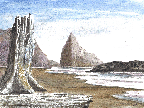
For Readers Not Familiar with Project Follow Through:
Chapter 5 discusses the evaluation of Project Follow Through. Most educators are not familiar with it, and it is all but unknown outside the educational community. That is ironic because Follow Through was the largest educational experiment ever conducted. It involved over 200,000 students and 22 sponsors of different approaches for how to teach at-risk children in grades kindergarten through 3. The 178 communities that implemented the different approaches spanned the full range of demographic variables (geographic distribution and community size), ethnic composition (white, black, Hispanic, Native American) and poverty level (economically disadvantaged and economically advantaged).
Follow Through’s sole objective was to determine which of the various approaches to teaching at-risk children in the primary grades worked best, and which approaches were pretenders. Parent groups in participating communities selected one approach. Each school district agreed to implement the approach the parent group selected.
Follow Through had safeguards to assure that the participating districts actually implemented the approach it adopted. Follow Through assigned a federal coordinator to each community. The coordinator’s role was to facilitate the implementation. Also, each participating district received $750 per student. This stipend was strictly earmarked to be used to implement the adopted-sponsor’s approach. Follow Through provided comprehensive services, which included a nutritional component, plus medical-dental care. Finally, Follow Through funded each sponsor for training and travel, based on the number of communities the sponsor worked with.
The project began in 1968 and was evaluated nine years later, after the various sponsors had a reasonable time period to de-bug their operation. Direct Instruction was one of the sponsors.
Chapter 5 picks up the story from there.
Featured Video
Kindergarteners Showing Off Their Math Skills 1966 Uncut demonstration of at-risk children who were taught math by Zig Engelmann as four year olds and five year olds. The session was filmed in front of a class of college students in August with no rehearsal. Children work addition, subtraction, multiplication, division problems, basic algebra problems, fraction problems, area problems, factoring, and simple simultaneous equations.
Watercolors by Zig

Picture of the Month
February
Deer in the Oregon Cascades
(Broken Top)
Featured Video
Kindergarteners Showing Off Their Math Skills 1966 Uncut demonstration of at-risk children who were taught math by Zig Engelmann as four year olds and five year olds. The session was filmed in front of a class of college students in August with no rehearsal. Children work addition, subtraction, multiplication, division problems, basic algebra problems, fraction problems, area problems, factoring, and simple simultaneous equations.

